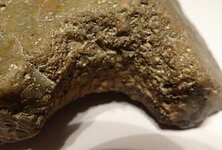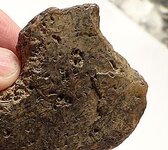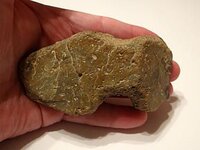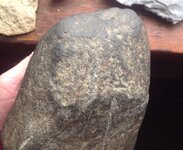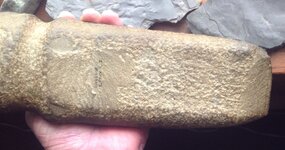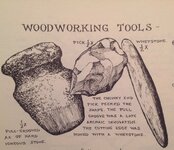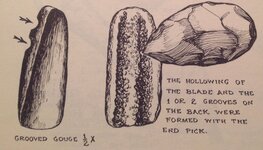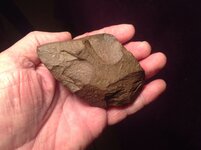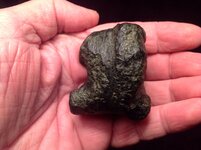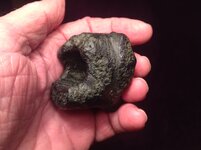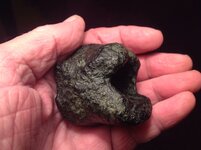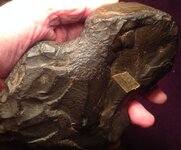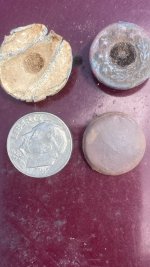krbrid
Greenie
Walking along a small gravel bank that runs between two S-curve bends in the creek I have found several items of interest, all within a few yards of each other. The gravel bank sits about 10 feet below a dirt bank that slopes down to it. On top of the dirt bank is a flat area and the creek meanders thru hills and farm country. One of the more interesting pieces I found could be a small adze, scraper, or wood working tool. It is about 4 inches long with two rounded indentations near the back end. The back end slopes sharply to a flat edge while the front end retains a more gradual slope to a flat edge, when viewed from the top. The other side of the object is basically flat. It appears to be made from brown flint. Overall it retains a hand worked appearance, but I'm not sure what it is. It's smallish size seems to indicate possibly a stone adze, but is probably too small to be a stone axe and it is too rough in appearance as they are generally a lot smoother. Here is a link to a similar kind of object that appears to be made out of the same kind of material. Indian Artifacts - Notched Flint Axe - Arrowheads
Any thoughts?
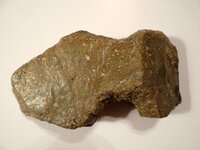
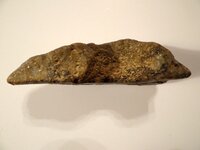
Any thoughts?


Amazon Forum Fav 👍
Last edited:
Upvote
0



